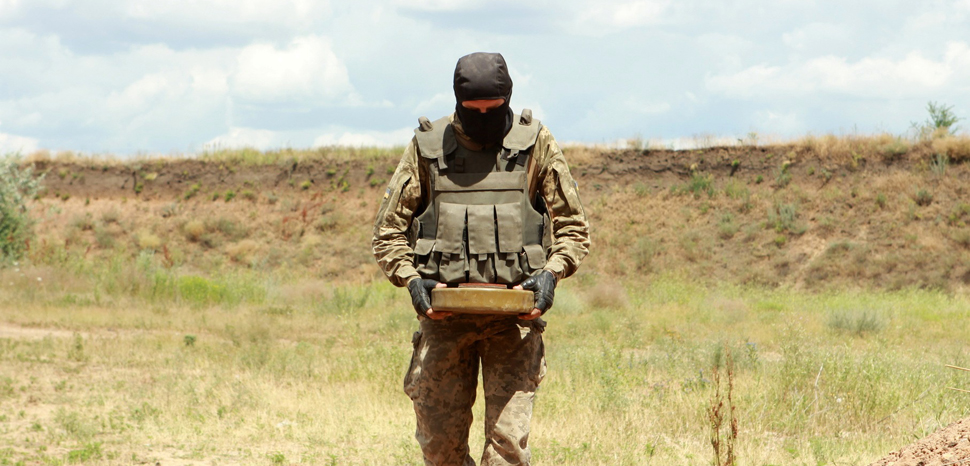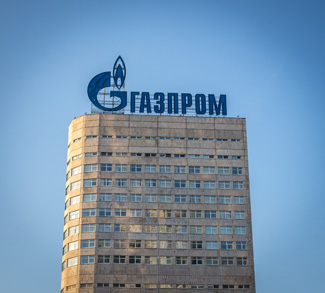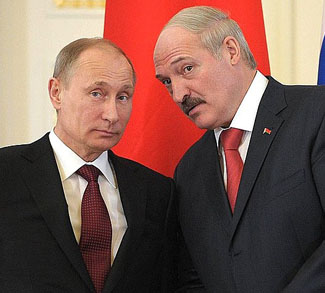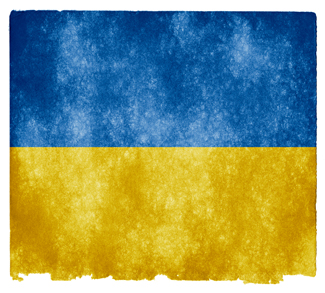Bilateral relations between Russia and Ukraine have been confrontational since 2014, when the civil unrest triggered by the Euromaidan movement managed to overthrow pro-Russian president Viktor Yanukovych in 2014. This turning point fueled a reorientation of Ukraine’s strategic alignment. Ever since, Kiev has sought to deepen ties with the West through the pursuit of membership in the EU and NATO, a development that represents a setback for the plans of Moscow to reassert itself as the unchallenged hegemon of the post-Soviet space. Hence, shortly afterwards, the Kremlin responded with the de facto annexation of Crimea and with the covert instigation of insurgent militias in the Donbass, an eastern region of Ukraine in which pro-Russian attitudes prevail amongst the local population. As recent events show, diplomatic negotiations failed to defuse the atmosphere of deepening hostility.
After months of rising military and diplomatic tensions, President Vladimir Putin announced in a fiery speech his decision to recognize the independence of Lugansk and Donetsk, the epicenter of Russophile separatist forces. Shortly afterwards, in a second speech, an overt Russian military operation was announced. Its execution started immediately. The resulting shockwaves have shaken Kiev, but they also have gone much further. Germany is reassessing its willingness to green light the Nord Stream 2 natural gas pipeline project. Britain, Poland and the Baltics are pushing for the adoption of a hardline common stance towards the Russians, and Washington has announced the imposition of financial sanctions ‒ an increasingly common staple of American economic statecraft ‒ which taken together represents an initiative to integrate a Western anti-Russian coalition, furnishing a supply of military equipment to Ukraine. So far, it is unknown at this point if the mobilization of Russian troops to the breakaway ‘republics’ and a parallel campaign of airstrikes across Ukraine (allegedly against military targets) seek to alter the ‘facts on the ground’ in order to bargain from a position of increased strength, perform an act of brinksmanship to extract concessions, simply carry out a limited intervention, ‘behead’ the Ukrainian government and usher in regime change, or undertake a full-scale invasion. There is a great deal of strategic ambiguity and the natural fog of war begets confusion.
Although how this drama will unfold in the following weeks, months, and years remains unclear, this episode is structurally significant for various reasons. It demonstrates Moscow’s willingness to rely on hard power in the so-called ‘near abroad,’ regarded as its exclusive sphere of influence. In turn, the Americans are caught in an uncomfortable position: the unipolar moment is being contested by a revisionist great power eager to settle scores after a series of humiliating episodes (such as the ‘color revolutions’, NATO expansion, bombing of Serbia, and diplomatic recognition of Kosovo’s independence), but US direct involvement is not an option. Moreover, the Europeans are baffled by the prospect of a conflict that could very well unravel the transatlantic security architecture that was forged in the post-Cold War era. Plus, their margin of autonomous action is severely restricted because of their overreliance on both Russian energy exports and American military protection.
However, perhaps the most remarkable aspect that highlights the ground-breaking character of this ongoing situation is that it might represent the final nail in the coffin of the idealistic expectations ‒which flourished during the 90s ‒ about the definitive demise of war in Europe and the purported imminence of a much more peaceful, harmonious and collaborative rules-based world order. In other words, it marks (after decades of intellectual triumphalism) the fateful return of realpolitik as an interpretative prism to understand the field of international relations as a Darwinian competitive arena full of minefields. As this reality sinks in, the illusions about the ‘end of history’ are vanishing. In this regard, it is pertinent to examine the geopolitical importance of Ukraine, the stakes for the great powers, and what can be expected in the near future.
Why Ukraine Matters
Most of Ukraine’s territory is a flatland with no meaningful natural obstacles. Furthermore, since it is positioned along a terrestrial gateway that connects the European peninsula with the very core of the Eurasian heartland, for centuries it has operated as a corridor for the imperial pursuits of great powers seeking to move in either direction. Hence, this location can be used as a spearhead of military power projection, a defensive buffer state that provides the strategic advantage conferred by distance or a borderland in which clashing spheres of influence overlap. Unsurprisingly, throughout history Ukraine has witnessed a substantial amount of war, violence, and bloodshed. This troubled background includes chapters like the Mongolian invasion, the Crimean War, War World One, the fallout of the Bolshevik Revolution, the carnage unlashed by War World Two, the massive impact of both the Holodomor and the draconian Stalinist terror, amongst others. Likewise, the territory of what is nowadays Ukraine is constantly being fought over. In fact, it has been taken by the likes of Napoleonic France, the Ottoman Empire, the Poles, the Russian Empire, Nazi Germany and the Soviet Union. A reflection of the legacy of Ukraine as a contentious flashpoint that can be seen today is that its Eastern half harbours Russophile sentiments. conditioned by several common denominators related to a shared civilizational heritage, whereas the sociocultural profile of Western Ukraine is a lot closer to Poland and the rest of Europe.
Ukraine also represents an asset whose control is strategic for military purposes. During the Cold War, the Kremlin decided to place nearly 3,000 nuclear weapons on Ukrainian soil due to its pivotal position for defensive and offensive purposes, an arsenal that was sent to Russia after the collapse of the USSR. In addition, the port of Sevastopol ‒ located in the Crimean Peninsula ‒ is a strategic naval facility that currently hosts the headquarters of the Russian Black Sea Fleet. Regardless of who operates it, said location is instrumental for supporting operations in Eastern Europe, the Balkans, the Mediterranean and the Levantine coast. For example, such an outpost enabled the game-changing intervention of Russian forces in Syria.
On the other hand, Ukraine is also significant from a geoeconomic perspective. It hosts infrastructure that connects Russia with Europe, including natural gas pipelines and motorways. Furthermore, Ukraine was one of the most developed republics of the former Soviet Union and its GDP is the third-largest in the region. Despite prolonged economic hardship, Ukraine retains important industrial capabilities in the fields of steelmaking, aerospace, chemicals and the manufacture of military hardware. Plus, it contains deposits of both coal and metallic minerals such as iron, titanium, manganese and uranium. Another relevant aspect is that Ukraine possesses fertile land (known as chernozem or ‘black soil’) that is suitable for growing cereals, which makes it a formidable breadbasket. Recently, thanks to a well-educated human capital and the flow of foreign investments, Ukraine has nurtured a prosperous high-tech sector with comparative advantages in the production of software, IT services, and research and development activities. Finally, its access to the Black Sea and the Dnieper River ‒ a navigable waterway ‒ means that Ukraine offers an optimal gateway to engage in international trade.
What is at Stake for Great Powers?
For Russia, controlling Ukraine ‒ or at least making sure that it remains neutral ‒ is a concern of national security. Ukraine’s territory provides the strategic depth that Russia would need to repel an invasion or valuable time to carry out a retaliatory second strike in case of a nuclear confrontation. Without Ukraine, the Russian heartland is vulnerable to attacks coming from the West. Therefore, Moscow’s efforts to restore its regional hegemony in the post-Soviet space cannot be fully successful unless Ukraine is somehow returned to its geopolitical orbit. Unsurprisingly, Moscow believes that both the 2004 Orange Revolution and the Euromaidan protests that took place a decade later were regime change operations masterminded by the CIA and supported by Washington and Brussels to encircle Russia. In addition, for Moscow Ukraine is the “missing piece” of multilateral structures headed by the Kremlin to foster reintegration under its leadership in the former Soviet Union, including the Collective Security Treaty Organisation (CSTO) and the Eurasian Economic Union.
Furthermore, the eastern half of Ukraine (especially the area known as ‘Novorossiya’) contains millions of inhabitants whose identities share many affinities with Russia. It must be noted that, considering Russia’s shrinking demographic weight, people represent an asset worth harvesting in order to restore its vitality as a functional state in the long run. In addition, since the mediaeval state of the so-called ‘Kievan Rus’ is the historical cradle of Eastern Slavs (Russians, Ukrainians and Belarussians), recovering Ukraine would be a major boost for the Russian national morale. In this respect, it is relevant to underscore that, in accordance with the worldview of Moscow’s imperial tradition, a Ukraine in the hands of hostile forces is an ‘aberration’ that needs to be reversed. All of these factors explain why the Kremlin is willing to go to great lengths to place Ukraine once more under its suzerainty, even if that entails the risks and costs that come with assuming a standoffish attitude towards the West.
For the US, Ukraine per se is not a vital interest. Nevertheless, it must be borne in mind that, as a sea power from the outer crescent, preventing the development of a strategic interconnectedness between the heartland and Western European rimland is one of the geopolitical linchpins of American national security. As classical geopolitical thinkers observed, the resulting configuration would combine an impressive pool of military strength, manpower, natural resources, wealth, and technology. Therefore, said bloc could challenge America’s position as the world’s hegemonic power. In fact, this reasoning determined America’s involvement in two World Wars, the Cold War and Washington’s efforts to undermine the infrastructure projects that would increase the flow of Russian hydrocarbons to European consumer markets. Accordingly, Ukraine is instrumental for Washington because it could serve as a potential barrier that prevents the rise of closer ties between the EU (under German leadership) and the Eurasian Economic Union (headed by Russia). Hence, even if things get ugly, the Americans can witness events from a safe distance while the Ukrainians weather the impact of the ensuing chaos.
Additionally, there are also secondary interests. As the prominent neorealist scholar Kenneth Waltz noted, NATO’s eastward expansion has offered an opportunity for the US military-industrial complex to increase its exports of weaponry and equipment to new members of the alliance. Even though it does not formally belong to the trans-Atlantic alliance, Kiev has been treated as an unofficial member that has access to American-made arms. In 2021 alone, Kiev received lethal and non-lethal US military hardware worth 450 million USD, including anti-tank and anti-aircraft missiles, helicopters, firearms, ammo and radars. Although good for the profits of American manufacturers and the influence wielded by their lobbyists in DC, these sales have also fueled tensions.
Moreover, there is also an ideological component that has further exacerbated Washington’s hostility towards Russia. After the end of the Cold War, some highly influential American ideologues and politicians embraced the idea that unipolarity was here to stay. Thus, they believed that the US should remake the world in its image and likeness, even through military force if necessary. This worldwide neoconservative crusade targeted the former Soviet Union as an area in which regime change had to take place in multiple countries to advance the doctrinal agenda championed by liberal idealism, including liberal democracy, free markets, the technocratic formulation of policymaking, privatization, the Western conception of human rights and so on, regardless of local realities, circumstances and worldviews. This is another driver behind the ‘color revolutions’ supported by the State Department and a constellation of NGOs which promote the dissemination of ‘open societies.’ From this perspective, Vladimir Putin, his allies and everything they stand for ‒ nationalism, authoritarian rule, Eurasianism, a neo-Byzantine instrumentalisation of religion as a tool of statecraft, and the intervention of the state in the economic sphere ‒ are held in contempt. Consequently, for this faction no accommodation or compromise is possible with a great power which does not share its fundamental values even if realpolitik suggests that, in an imperfect world, it is preferable to manage rivalries over irreconcilable interests so that strategic stability prevails.
Finally, the present Ukraine crisis poses complicated dilemmas for Germany. As the cornerstone of the EU, Germany is a major geoeconomic player. In fact, reunified Germany is an industrial, commercial, and financial powerhouse whose gravitational pull has been the linchpin of European integration. However, Berlin has basically outsourced its national security to the nuclear umbrella provided by the Americans through NATO since the Cold War. Thus, Germany has no independent substantial defense capability or the political willingness to engage in a large-scale conflict. Plus, Germany is highly reliant on Russian supplies of natural gas, which are distributed through pipelines. Even if Germany wanted to replace the Russians as providers of said commodity, this course of action entails economic losses for German businesses and it also poses complicated logistical challenges. Berlin could embrace a position of staunch Atlanticism and confront Moscow or try to craft a new version of Östpolitik to encourage détente. So far, another possibility is that the cadres of the German political elite ‒ until now heavily influenced by the paradigm of liberal idealism ‒ might eventually experience a rude awakening and decide that Berlin needs to reassert its military strength in order to deal autonomously with an increasingly dangerous and uncertain environment in its own neighborhood. Such a realization could even drive Germany to develop its own nuclear weapons programme, a possibility that was first raised by the realist thinker John Mearsheimer.
What to Expect
It is hard to envisage how this crisis will unfold. The risk of miscalculation, the prospect of escalation and the use of deception do not dissipate the already thick cloud of uncertainty. Therefore, a responsible exercise of strategic foresight requires contemplating several possibilities and deciphering their consequential implications. Paraphrasing Winston Churchill, the ultimate Russian endgame is a “riddle, wrapped in a mystery, inside an enigma.” However, the latest actions undertaken by the Kremlin create facts on the ground that make it impossible for Ukraine to join NATO, which is already a favorable outcome for Moscow. Yet, such move can also be interpreted as a warning shot or ultimatum to tell the West and Kiev ‒ in the strongest possible terms ‒ that Russia means business and that it is prepared to use force unless at least some of its demands are satisfied. If this interpretation is correct, it would entail guarantees that ensure the long-term neutrality of Ukraine.
Nevertheless, if there are no concessions, Moscow’s thrust will seek to provoke regime change to alter Ukraine’s strategic alignments. An option is to increase pressure on Kiev until its pro-Western regime implodes through both conventional military strikes and/or heavy-handed tactics of hybrid warfare, such as covert operations, cyberattacks, political intrigue, targeted assassinations, false flags, acts of sabotage, psychological manipulation, propaganda and perhaps even the organization of a coup d’état. The Kremlin could also employ the Donbass as a spearhead to launch a Blitzkrieg assault to take the port of Odessa ‒ Ukraine’s access point to international trade ‒ an aggressive maneuver that would strangle the Ukrainian economy, plunge the country into disarray and provide a forward position to reach as far as Moldova.
On the other hand, one of the reasons why Moscow is upping the ante is because it is also arguably targeting NATO, but in an indirect way to rollback the transatlantic alliance rather than through a frontal engagement. A failed state that has been conquered, fragmented, or engulfed by turmoil could not even aspire to join NATO. This measure also demonstrates that, despite countless diplomatic promises, Western security guarantees cannot be taken for granted. Plus, the Russians are likely playing with fire as a calculated risk in order to exploit NATO’s internal political disagreements and perhaps even precipitate its dissolution or its diminishment. The fulfilment of such an outcome would be a major political masterstroke, but it could also easily backfire. Too much aggressiveness can end up unifying NATO against a common enemy and prompting Finland and Sweden to seek membership, further isolating Russia from Europe.
A large-scale ground invasion would be a very dangerous gamble, but the Kremlin might think it is worth pursuing if the potential benefits surpass the costs. Russia would most surely prevail through sheer force, but an occupation of a country like Ukraine would be very problematic, especially in its Westernmost corners. In the hands of Ukrainian insurgents, American weaponry ‒ especially Javelins and Stingers ‒ could inflict heavy casualties, making Russian forces bleed badly in a protracted irregular conflict fought in densely populated urban areas. More importantly, Washington and its European allies would harness this window of opportunity to draw Russia into a bloody quagmire. All they have to do is to supply the rebels with weapons, intelligence, logistical support and cash. The expectation would be turning Ukraine into a black hole which depletes copious amounts of Russian resources.
Hence, a full invasion would alienate the Ukrainian populace, including those that have favorable views of Russia. However, Moscow might feel temped to try anyway. After all, unlike Afghanistan’s rugged terrain, the Ukrainian plains do not offer a lot of shelter for guerrillas and it is unclear if the resolve of the local population is strong enough to overcome meaningful difference and join forces against a Russian invasion, a vicious fight in which they will have to be willing to kill and die. Furthermore, there are recent experiences which illustrate that insurgencies ‒ even if they are motivated by uncompromising ideologies ‒ can be ruthlessly crushed with superior technology, firepower, and intelligence. These examples include the suppression of various Palestinian uprisings by Israel, Al-Assad’s campaign against jihadist forces, and the Colombian state’s decisive victory over FARC Marxist guerrillas. In addition, the Russian military and security services have learned a lot about counterinsurgency and irregular warfare from their own involvement in Chechnya and Syria. The intervention of CSTO troops, under Russian leadership, in Kazakhstan to extinguish a local outbreak of civil unrest in early 2022 is also a precedent worth considering.
Finally, based on the extrapolation of trends, an escalation would predictably unleash far-reaching geoeconomic ramifications. The US will impose increasingly heavier sanctions and might even entertain the idea of permanently excluding Russia from the SWIFT network, a coercive measure that has been described as the financial equivalent of a nuclear strike. If the tables are turned, a dismal failure could prompt the collapse of the Russian Federation or the replacement of Vladimir Putin, but it is unclear if his successor would be a pro-Western reformer or somebody much more hawkish and revanchist. Moreover, the Europeans can either rethink their energy policy in order to minimize their reliance on Russian oil and gas, or remain neutral in order to secure their continuous supplies. The Kremlin is aware of these possibilities so it can respond by developing closer economic, commercial, and financial ties to China, interrupting the flow of energy to European states that assume a confrontational attitude towards Russia and launching retaliatory asymmetric countermeasures designed to weaken the role of the dollar as the world’s hegemonic reserve currency and Anglo-American control of international financial circuits.
Lessons Learned
Ukraine is caught in the middle of a vortex of simmering geopolitical tensions between Russia and the West, and such dangerous situation can easily spiral out of control. The fate of this crisis is unknown but considering the magnitude of what is at stake, both sides have incentives to act ruthlessly, even if that means opening Pandora’s box. After the outbreak of hostilities, a negotiated settlement does not seem very likely. As a result, the spectre of war is haunting Europe once more. History can be frozen for a while, but the unchanging character of the human condition and the impersonal forces of geopolitical realities always manage to bring it back. It is not far-fetched to claim that the global balance of power in the 21st century will be shaped by the outcome of this dramatic crisis in one way or another, but only time will tell if the decisive factor will be force, diplomacy, or cunning.




